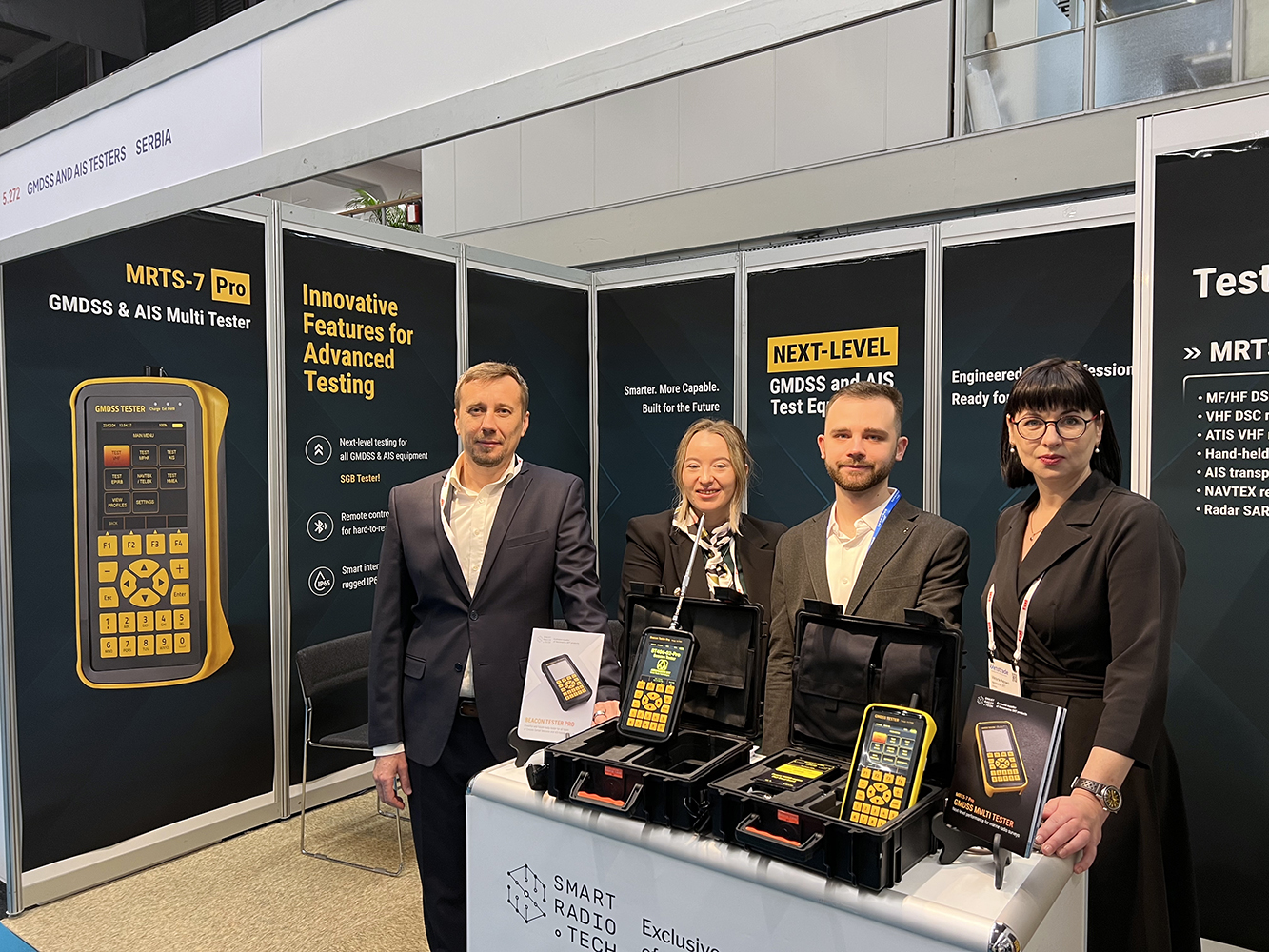Frequencies for the Global Maritime Distress and Safety System (GMDSS)
Since its inception, radio has been used to save lives at sea. After the tragedy with the Titanic, the International Conference on Safety of Life at Sea (SOLAS 1914) decided that ships with more than 50 people on board should “be fitted with a radiotelegraph installation” to maintain a radio watch at a frequency of 500 kHz. The First World War did not allow these plans to come true. Only SOLAS-29 obliged to introduce a radio watch in the MF range at a frequency of 500 kHz using Morse code on passenger and cargo ships of 1,600 gross registered tons or more.
SOLAS-48 set the requirement to keep a radio watch at a frequency of 2182 kHz in the radiotelephone mode for ships of 300-1600 gross registered tons.
SOLAS-74 made it obligatory for all ships at sea to maintain a continuous radio listening watch in the radiotelephone mode at the frequencies of the VHF and MF bands (156.8 MHz and 2182 kHz, respectively).
The properties of the radio waves of the above ranges do not allow radio communication at the global level. Ships on the high seas could only count on the assistance of vessels located at a distance of 100-150 miles, whose radio operators received signals asking for help.
The limited range of communication means, as well as the human factor, reduced the effectiveness of using radio communications to ensure the safety of people and ships at sea. In 1988, amendments concerning radio communications were adopted to the international convention SOLAS-74. The Global Maritime Distress and Safety System (GMDSS) was introduced. And with it, a new era began.
By this time, satellite systems were widely used, providing fast and reliable communication regardless of distance, as well as narrow band direct printing (NBDP) telegraphy, which replaced Morse code. A digital selective call (DSC) system was developed, which made it possible to revoke a continuous radio listening watch.

The frequencies used in the GMDSS are approved by the Radio Regulations of the International Telecommunication Union (ITU). The purpose of this organization is to regulate radiocommunication services and to distribute the radio frequency spectrum between various groups of users, including space services.
According to Appendix 15 of the ITU Radio Regulations (Edition of 2020), the following frequencies shall be used for the transmission of distress and safety information under the GMDSS:
In the radiotelephone mode (for voice communication): VHF-CH16 (156.8 MHz), 2 182 kHz, 4 125 kHz, 6 215 kHz, 8 291 kHz, 12 290 kHz, 16 420 kHz.
In the DSC (digital selective calling) mode: VHF-CH70 (156.525 MHz), 2 187.5 kHz, 4 207.5 kHz, 6 312 kHz, 8 414.5 kHz, 12 577 kHz, 16 804.5 kHz.
In the radiotelex mode (NBDP), the transmission is carried out on the following frequencies: 2 174.5 kHz, 4 177.5 kHz, 6 268 kHz, 8 376.5 kHz, 12 520 kHz, 16 695 kHz.
This information is presented in a table:
Radiotelephony |
DSC |
Radio telex (NBDP) |
|
VHF band |
||
|
CH16 (156.8 MHz) |
CH70 (156.525 MHz) |
— |
|
MF band |
||
|
2 182 kHz |
2 187.5 kHz |
2 174.5 kHz |
|
HF band |
||
|
4 125 kHz |
4 207.5 kHz |
4 177.5 kHz |
|
6 215 kHz |
6 312 kHz |
6 268 kHz |
|
8 291 kHz |
8 414.5 kHz |
8 376.5 kHz |
|
12 290 kHz |
12 577 kHz |
12 520 kHz |
|
16 420 kHz |
16 804.5 kHz |
16 695 kHz |
Direct communication during search and rescue operations is carried out at a frequency of 156.8 MHz (VHF-CH16) and at a frequency of 2182 kHz. At the same time, communication with aircraft stations is carried out at a frequency of 156.3 MHz (VHF-CH06) and at frequencies of 3 023 kHz, 4 125 kHz, 5 680 kHz, 121.5 MHz, 123.1 MHz.
Information about the safety of navigation (MSI) is transmitted using narrow-band letter-printing telegraphy at a frequency of 518 kHz (international NAVTEX system).
-
There are 2 more frequencies: 490 kHz (national frequency) and 4 209.5 kHz (additional frequency) for transmitting NAVTEX messages.
-
On short waves (HF), MSI is transmitted at frequencies of 4 210 kHz, 6 314 kHz, 8 416.5 kHz, 12 579 kHz, 16 806.5 kHz, 19 680.5 kHz, 22 376 kHz and 26 100.5 kHz.
-
Maritime safety information is also transmitted via satellite communication in the frequency bands of 1 530-1 545 MHz, 1 621.35-1 626.5 MHz, 1 626.5-1 645.5 MHz, 1 645.5-1 646.5 MHz.
-
The frequency of 156.650 MHz (VHF-CH 13) is used to transmit messages on the safety of navigation between ships.
The frequency band 406-406.1 MHz is used exclusively by satellite EPIRBs (emergency position indicating radio beacons) in the Earth-to-space direction.
The frequencies 161.975 MHz (VHF-CH AIS 1) and 162.025 MHz (VHF-CH AIS 2) are used for AIS search and rescue transmitters (AIS-SART) in search and rescue operations.
The use of the 1 544-1 545 MHz band (space-to-Earth) is limited to distress and safety operations, including feeder links of satellites needed to relay the emissions of satellite EPIRBs to earth stations and narrow-band (space-to-Earth) links from space stations to mobile stations.
The frequency band 9 200-9 500 MHz is used by SARTs (radar transponders) to facilitate search and rescue.
* * *
All radio transmissions for testing purposes should be kept to a minimum at the frequencies specified above. They should be agreed with the authorized bodies, as necessary. If this is practically possible, testing should be performed on artificial antennas or with reduced power.
Testing on distress and safety calling frequencies should be avoided. In case it is unavoidable, it’s necessary to specify that these are test transmissions.
According to the Radio Regulations, any emission is prohibited if it causes harmful interference to distress and safety communications on any of the discrete frequencies listed above.
By Olga Davydova





Be the first to comment